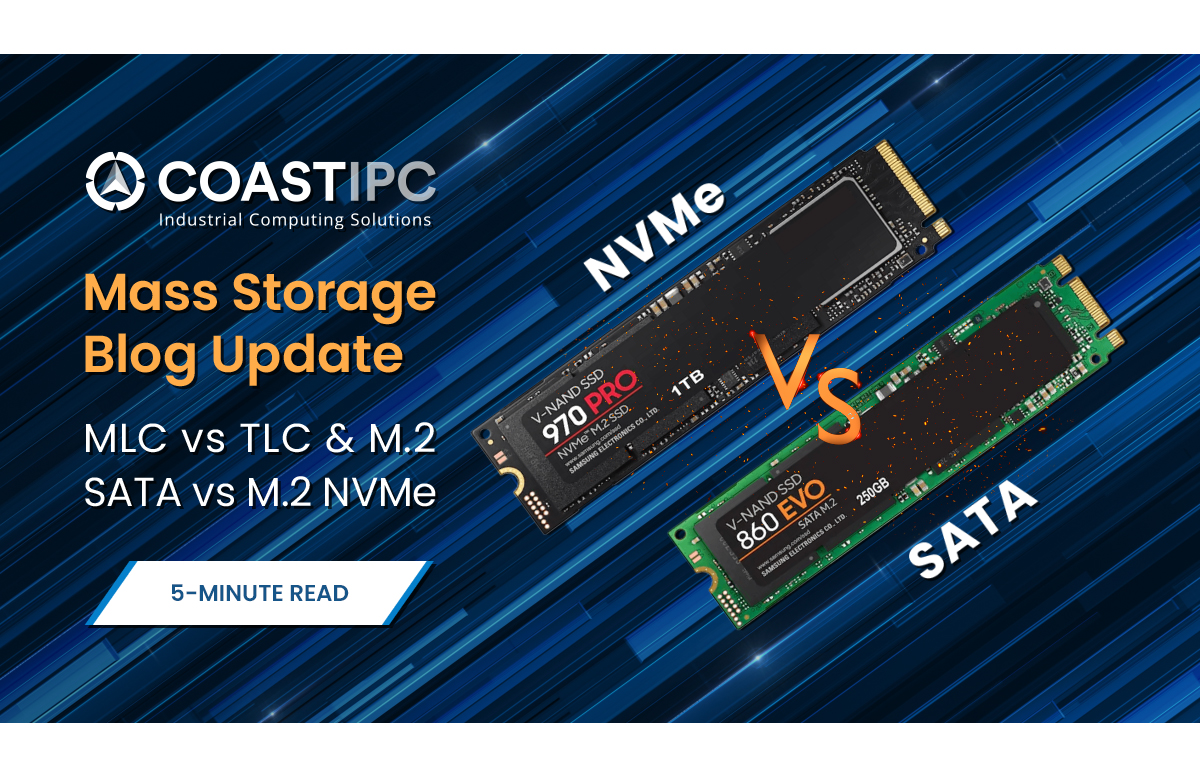
As technology for storage drives continues to evolve, it’s good to touch base periodically and review new opportunities. In the case of solid-state drives (SSDs), both storage density and device size have been making improvements suitable to industrial computing. Let’s look at both.
Flash memory technology used in SSDs has changed from single-bit storage to cells that can hold more than one bit’s worth of data at a time. Instead of using traditional binary logic levels, for instance, the multi-level cell (MLC) can store two bits of data in a single location. The data is encoded as one of four voltage levels representing 00, 01, 10, and 11. More recently, the cost-effective triple-level cell (TLC) stores three bits of data encoded per cell.
The ability to store multiple bits in a single memory cell greatly increases flash storage device capacity. It also decreases the cost per bit. While at first glance it may seem that more and cheaper is better, the increased data density comes with some tradeoffs. The most significant are speed and endurance.
MLC vs TLC Tradeoffs
Speed — the amount of time required to access a given memory location — decreases as the bit count per cell goes up because there are more bits to interpret and present at each request for data. Thus, MLC is slower than traditional flash memory (single bit per cell or SLC) , and TLC slower than MLC. Slower may not have a measurable impact on your application.
When used as a storage drive, however, the access speed differences may not be significant within the same type of connection. Drives gain efficiency by handling data in blocks rather than one cell at a time. If the SSD employs the SATA-3 protocol, for example, both TLC and MLC devices will perform about the same.
Endurance- This second tradeoff, arises due to the physical mechanisms involved in writing data to the cells in the drive. The write/erase process creates a physical stress in the cell that will eventually result in failure. Eventually is a long time off. Measured in time, even TLC drives are expected to operate for an excess of 3,000 hours of write/erase, which occurs in fractions of a second. What this means for most users, consumer and industrial, is that other parts of your system will be long obsolete before your drive “wears out.”
The exception may be for applications writing large amounts of data over and over – such as video surveillance. With the proper selection of specially designed drives for this purpose, the core system is still likely to be replaced before the drive.
In selecting your drive technology, speed difference and endurance of both MLC and TLC drives are so similar wither makes a good choice for most applications. Therefore price often influences the selection with TLC getting the nod.
New SSD Interface Options
There are also new choices in the interface technology available for your drive. SSDs have decreased in size by moving from 2.5” (still most common) to mSATA, and most recently M.2. After a shaking out period, the most popular M.2 drives are 22x80mm (like a stick of gum) and can hold storage cells on both sides.
These drives are available in both SATA-3 and the new NVMe interface. M.2 requires a socket on the motherboard or accessory device. The challenge for manufacturers is to maximize the PCIe lanes available for device communication, which can limit some products to have an M.2 SATA-3 storage socket. When more lanes are available, an NVMe can provide high speed access.
The more recent NVMe interface is a new protocol specifically created for SSDs. It can achieve transfer speeds up to 20 Gbps. Considering SATA-3 tops out at 6 Gbps, an NVMe drive can deliver data more than three times faster than SATA. The price of M.2 NVMe drives is very close to M.2 SATA drives, so your choice can be based on what the computer offers.
Making the right choice for your specific requirements can take some time considering opportunities and tradeoffs, but there is help. The knowledgeable team of experts at CoastIPC will be happy to assist you in evaluating your options. Just call 866-412-6278 or email [email protected] for help.
